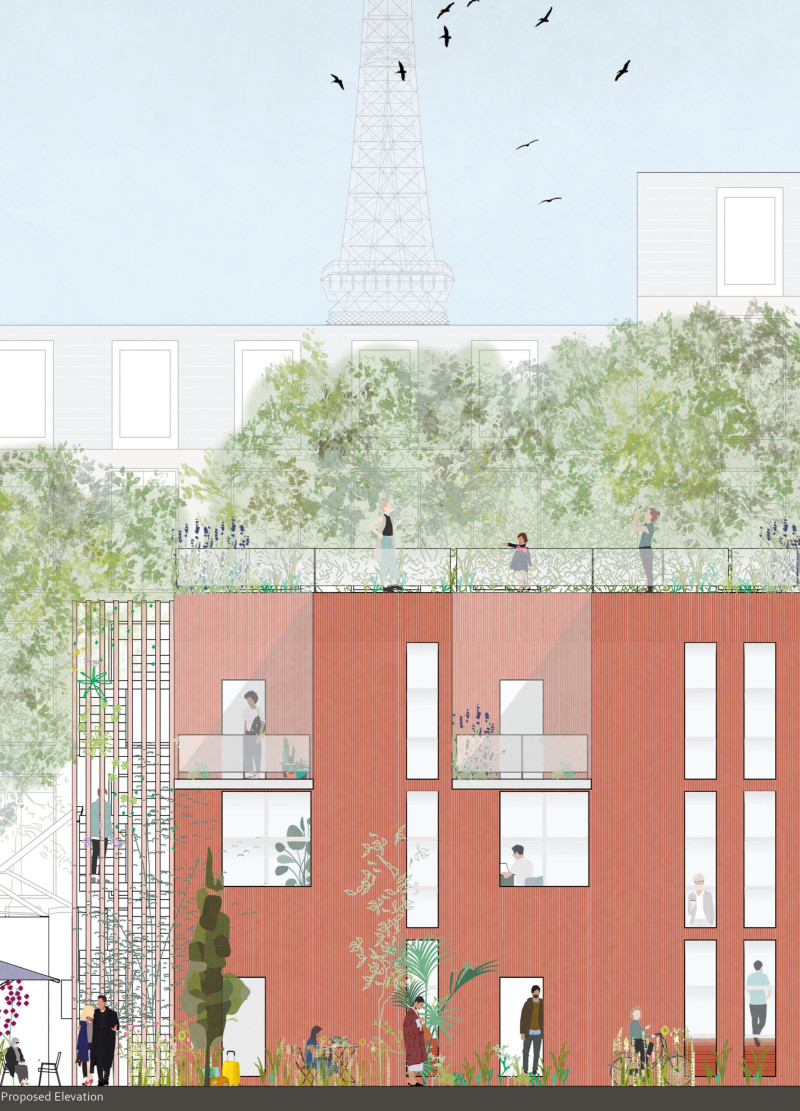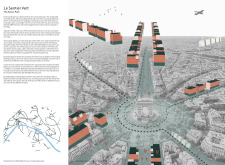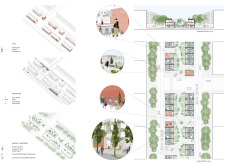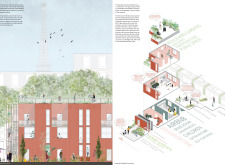5 key facts about this project
At first glance, the project showcases a sleek, modern facade that utilizes a blend of materials, including glass, concrete, and steel. The transparency offered by the extensive glazing allows natural light to penetrate deep into the interiors, creating a warming ambiance that welcomes both visitors and occupants. This use of glass not only fosters a sense of openness but also encourages visual connections with the surrounding environment, blurring the boundaries between the interior and exterior. The concrete elements, on the other hand, provide both structural integrity and a raw, industrial charm, grounding the project firmly within its urban context.
Functionally, the design is multifaceted. It hosts a variety of spaces tailored to accommodate diverse activities, enhancing its role as a community center. Open-plan areas are complemented by smaller, flexible spaces that can be adapted for different uses, from collaborative workshops to quiet study rooms. Such versatility is essential in modern architecture, reflecting changing societal needs and user behaviors. The thoughtful arrangement of these spaces promotes interaction among users, showcasing a commitment to fostering community engagement.
Unique design approaches are evident throughout the project. For instance, the incorporation of green roofs and vertical gardens not only contributes to the aesthetic value but also plays a significant role in sustainability. These features improve air quality, reduce urban heat, and manage stormwater effectively, exemplifying the design’s responsiveness to environmental challenges. Additionally, the project integrates renewable energy technologies, such as solar panels, which align with contemporary sustainable practices, showcasing a comprehensive approach to eco-conscious design.
Another notable aspect of the architectural design is its consideration of accessibility. Careful attention has been given to ensure that all areas are navigable for individuals with varying abilities. This commitment to inclusivity enhances the usability of the space, embodying an ethical stance that contemporary architecture increasingly embraces.
The interplay between the structural elements and spatial configurations creates a seamless flow throughout the building. From public gathering areas to private meeting spaces, each zone is meticulously designed to cater to its intended use while fostering a sense of belonging. The use of high-quality materials not only enhances durability but also elevates the overall experience of the space, adding an element of tactile richness to the environment.
The crisp lines and geometric forms employed in the design coalesce to form a cohesive architectural language that speaks to modern aesthetics while retaining a sense of warmth. Sensitivity to light and shadow dynamics reflects a deep understanding of natural illumination, encouraging occupants to appreciate the changing qualities of their surroundings throughout the day.
Reviewing the architectural plans and sections would provide a deeper understanding of the spatial dynamics and efficiency in the design process. The careful layering of spaces and the strategic placement of windows and openings reveal a commitment to both functionality and beauty. Furthermore, the architectural ideas presented in this project can serve as a case study for future endeavors aimed at integrating community needs with sustainable practices.
The project stands as a testament to contemporary architectural ideals, reflecting a comprehensive understanding of its environment and responsiveness to the community it serves. By exploring the project presentation, readers can uncover further insights into the design philosophy, material choices, and innovative solutions that define this architectural endeavor. Engaging with the architectural designs, sections, and plans will offer a valuable perspective on the intricacies involved in creating such a purposeful and well-rounded project.


























